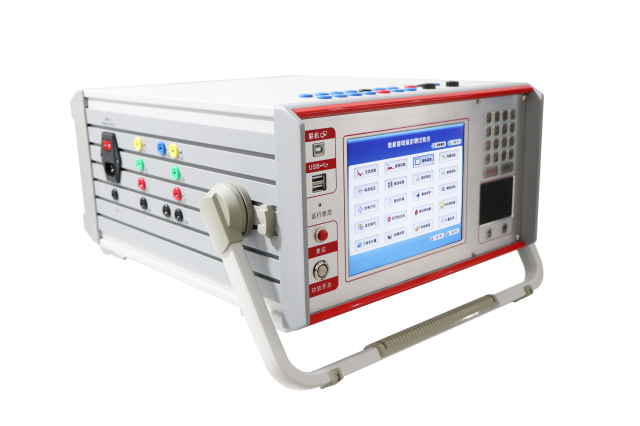Relays are crucial components in electrical and electronic systems due to their ability to control and switch high-voltage or high-current circuits. it can ensure the safe and reliable operation of a wide range of applications, from industrial automation and motor control to alarm systems and consumer electronics.
Relays are used in a wide variety of applications, including electrical power switching, motor control, alarm and security systems, automation and process control, and automotive applications. In the telecommunications and HVAC sectors, relays are employed to route and control signals, as well as manage the operation of heating, ventilation, and air conditioning systems.
Relays also find use in consumer electronics, scientific and medical instrumentation, and military and aerospace applications, allowing for the control and monitoring of various functions and processes. The versatility of relays enables their integration across a diverse range of industries, from small consumer devices to large-scale industrial and infrastructure systems.
Relays play a crucial role in ensuring reliable and efficient operation in a myriad of electrical and electronic systems.
What causes a relay to fail?
Electrical overload
If the current or voltage applied to the relay exceeds its rated capacity, it can cause the relay to overheat and damage its internal components, leading to failure.
This situation usually occurs when the relay’s load capacity is not properly selected or there is an issue with the circuit design.
Mechanical wear
The moving parts inside the relay, such as the armature and contacts, can gradually wear down due to repeated operation.
Severe wear can affect the reliability of the contact closure and even cause the contacts to stick or jam, resulting in relay malfunction.
Corrosion
Long-term exposure to moist, chemical, or corrosive gas environments can cause the metallic components inside the relay to corrode.
Corrosion can lead to oxidation of the contact surfaces, poor contact, and even complete sticking or breaking of the contacts.
Vibration
Excessive vibration or shock can damage the mechanical structure of the relay, affecting the operation of the contacts.
Severe vibration can also cause the contacts to dislodge or result in internal component damage.
Insulation breakdown
The insulation materials around the relay’s coil or contacts can gradually deteriorate over time, reducing their insulation performance.
Insulation breakdown can lead to short circuits or arcing, causing the relay to fail.
Contact contamination
Dust, dirt, and other impurities can accumulate on the contact surfaces over prolonged use, affecting their conductivity.
Contact contamination can result in poor contact, leading to unstable relay operation.
Aging
Even under normal usage conditions, the internal components of a relay will age and eventually fail over time.
Effective periodic inspection and replacement are important measures to prevent relay aging-related failures.
What test methods for relay protection ?
There are several common test methods used for evaluating the performance and functionality of protection relays. Some of the key test methods include:
Secondary Injection Test:
As discussed earlier, the secondary injection test involves injecting secondary current or voltage signals into the relay’s inputs to simulate real-world fault conditions and verify the relay’s behavior.
Primary Injection Test:
In this test, the actual primary current or voltage from the electrical system is applied directly to the relay’s inputs, allowing for a more realistic assessment of the relay’s performance under actual operating conditions.
Timing Tests:
These tests measure the time it takes for the relay to respond and operate (trip) under different fault or abnormal conditions, verifying the relay’s compliance with timing specifications.
Pickup and Dropout Tests:
These tests determine the precise current or voltage levels at which the relay picks up (activates) and drops out (deactivates), ensuring the relay’s settings are within the desired range.
Contact Performance Tests:
These tests evaluate the reliability and condition of the relay’s output contacts, including their ability to make and break circuits under various load conditions.
Environmental Tests:
These tests assess the relay’s ability to withstand environmental stresses, such as temperature, humidity, vibration, and electromagnetic interference, as per the applicable standards IEC 60255-26: Electromagnetic compatibility requirements.
Insulation Tests:
Insulation tests, such as dielectric, impulse, and high-voltage tests, verify the integrity of the relay’s insulation system and its ability to withstand the specified voltage levels.
IEC 60255-5: Insulation coordination for measuring relays and protection equipment. This part specifies the insulation requirements and test methods for relays, including dielectric, impulse, and high-voltage tests.
What is the secondary injection test for protection relay?
The secondary injection test for protection relays is a common testing method used to evaluate the performance and functionality of protective relays in electrical systems.
In a secondary injection test, a test set is used to inject a secondary current or voltage signal into the relay’s input terminals, simulating the conditions that the relay would experience in the real-world application. This allows the technician or engineer to verify the relay’s behavior and response under various fault or abnormal conditions, without affecting the primary electrical system.
The key objectives of a secondary injection test for protection relays include:
Verifying the relay’s pickup and dropout settings: The test set allows the technician to adjust the input current or voltage and observe the relay’s response, ensuring it operates as expected based on the configured pickup and dropout thresholds.
Checking the relay’s timing characteristics: The test set can be used to measure the time it takes for the relay to respond and operate (trip) under different fault conditions, validating the relay’s timing specifications.
Evaluating the relay’s overall functionality: The secondary injection test checks the proper operation of the relay’s internal logic, output contacts, and any associated alarms or indicators, ensuring the relay is functioning as designed.
Troubleshooting and diagnostics: If a relay is suspected of malfunctioning, the secondary injection test can help identify the root cause by isolating the issue and verifying the relay’s behavior under controlled test conditions.
What is the feature of secondary injection relay protection testing ?
Relay Protection Tester plays a key role in operating electricity power systems reliably and safely.
It has the below feature .

- Comprehensive Field Test Capabilities:**This tester meets all field test requirements with standard 6-phase voltage and 6-phase current output, delivering up to 125V/phase and 30A/phase. When 6 phases are connected in parallel, the current can reach up to 180A. Equipped with a Digital Signal Processor (DSP) microcomputer, it tests both traditional relays and protectors as well as modern microcomputer relays, making it ideal for transformer differential protection and transfer equipment testing.
- Advanced Control Board:**Utilizes a DSP + FPGA architecture with a 16-bit DAC output, generating high-density sine waves with 2000 points per cycle, significantly improving wave quality and instrument accuracy.
- User-Friendly Interface:**Features a high-performance embedded industrial control computer and an 8.4-inch TFT true color display with a resolution of 800 × 600, providing rich visual information, including current working conditions and various help information. The interface is designed for ease of use and fast operation.
- Reliable System:**Features reliable and perfect protection measures and power soft start, with a certain degree of fault self-diagnosis and blocking function.
- Convenient Input Devices:**Comes with an ultra-thin industrial keyboard and an optical mouse, allowing for a variety of operations just like on a regular PC.
- High-Fidelity Linear Amplifier: Ensures accuracy at low currents and stability at high currents.
- USB Connectivity:**Directly connects to a PC via USB without the need for an adapter cable, simplifying usage.
- Laptop Compatibility: Can be connected to a laptop computer (optional). The same software is used for both laptop and industrial machines, eliminating the need to learn new operating methods.
- Dedicated DC Auxiliary Voltage Source:**Provides a separate DC auxiliary voltage source with output options of 110V (1A) and 220V (0.6A) to power relays or protective devices requiring DC power.






